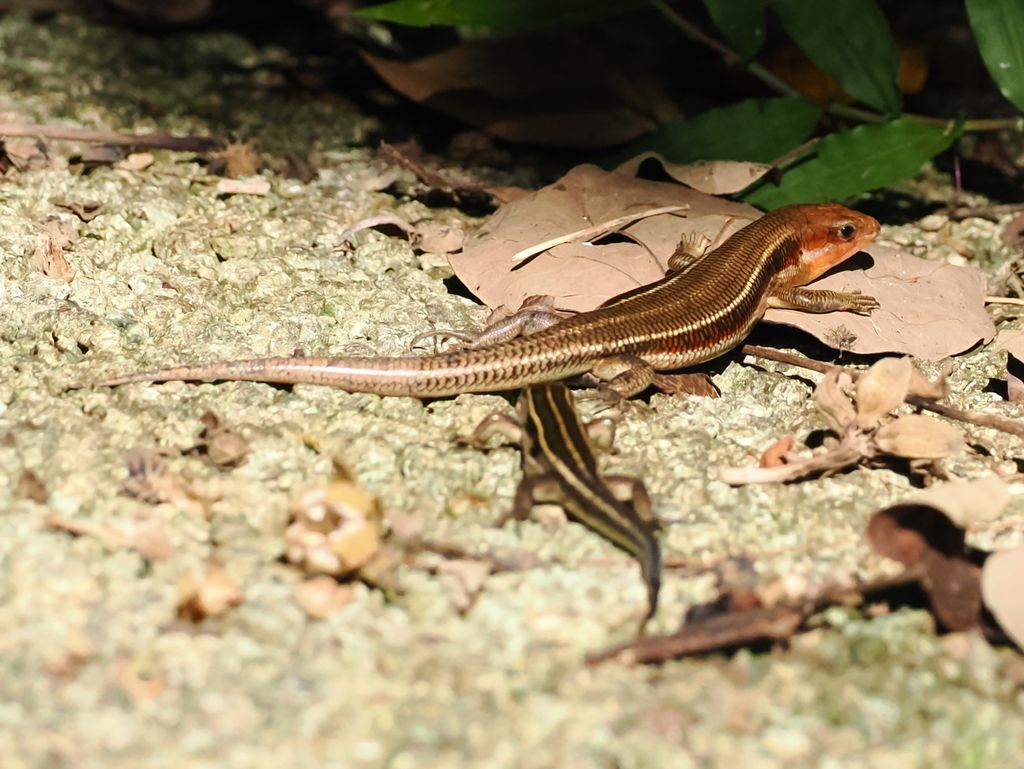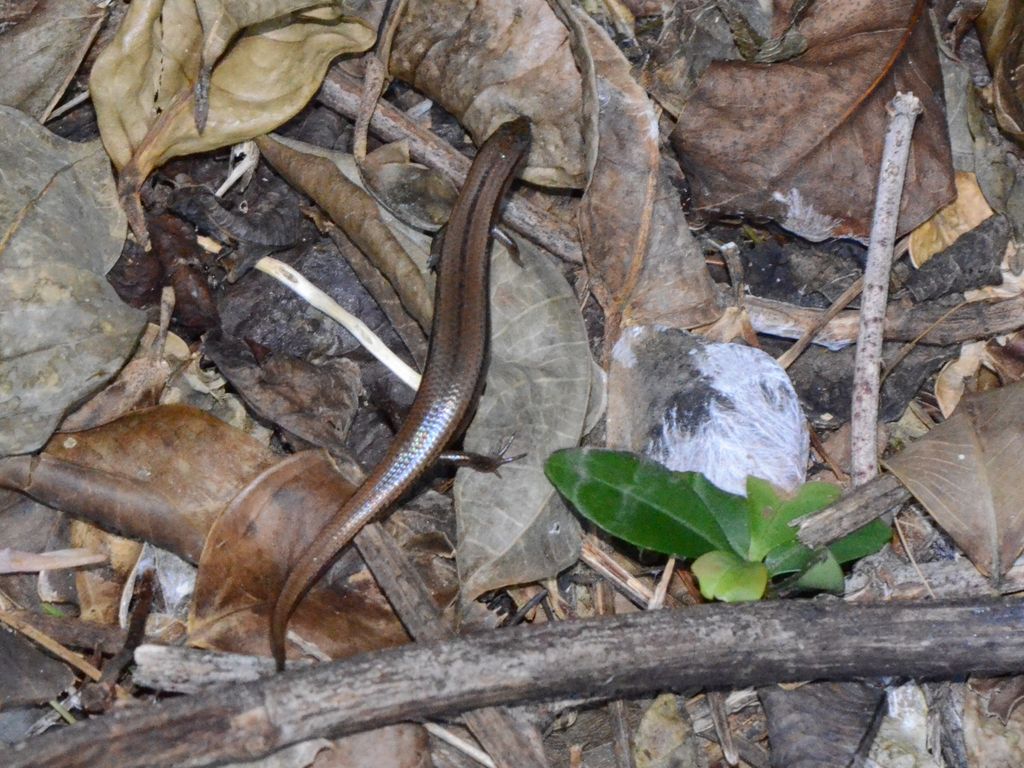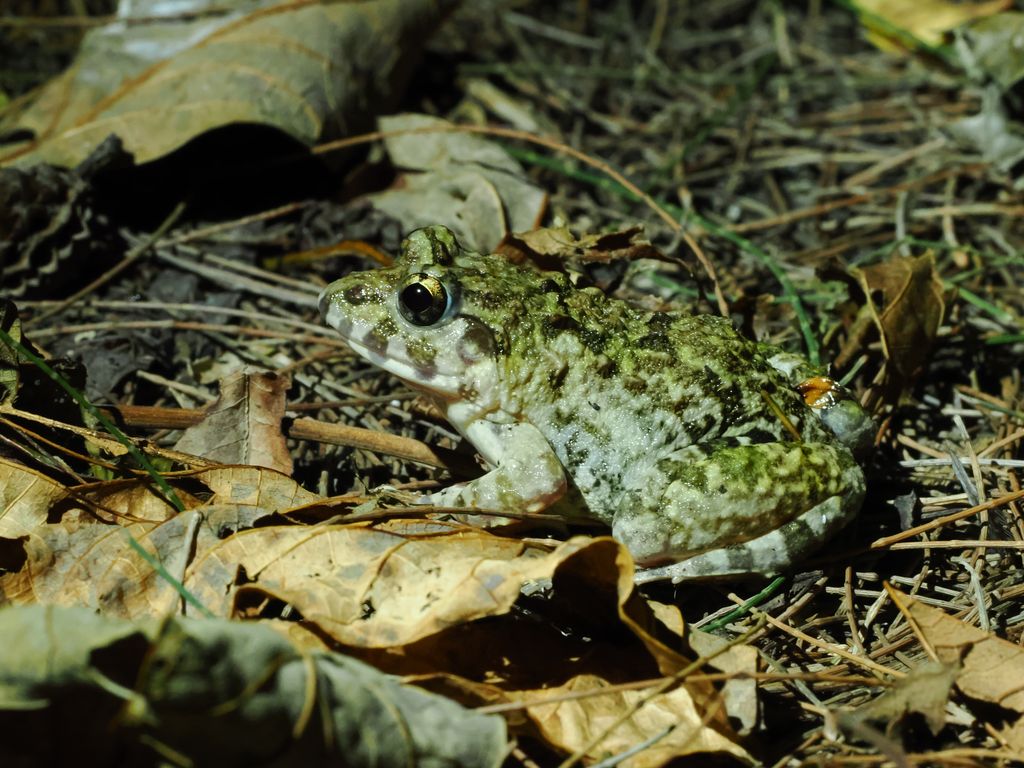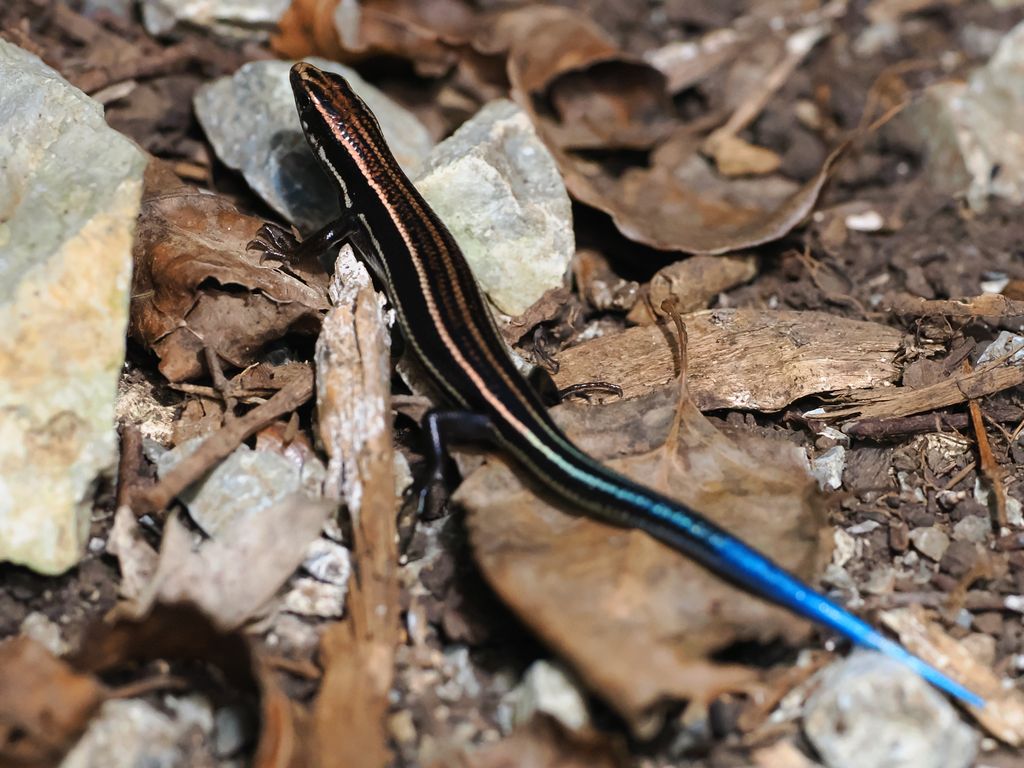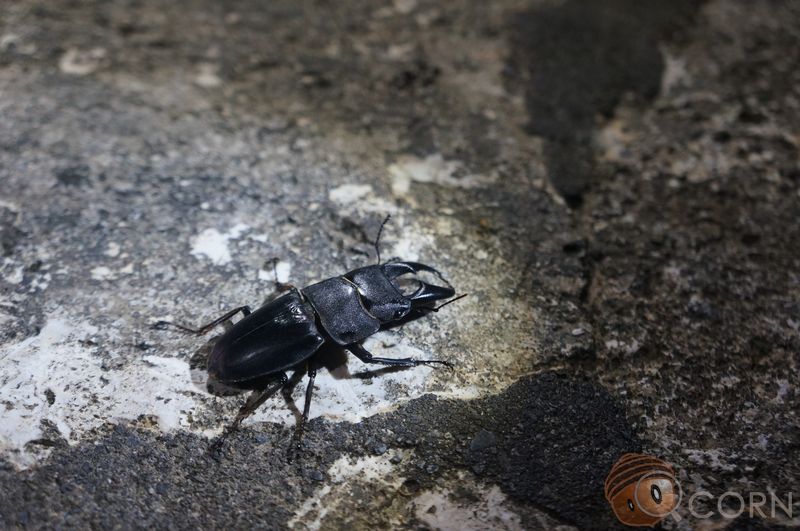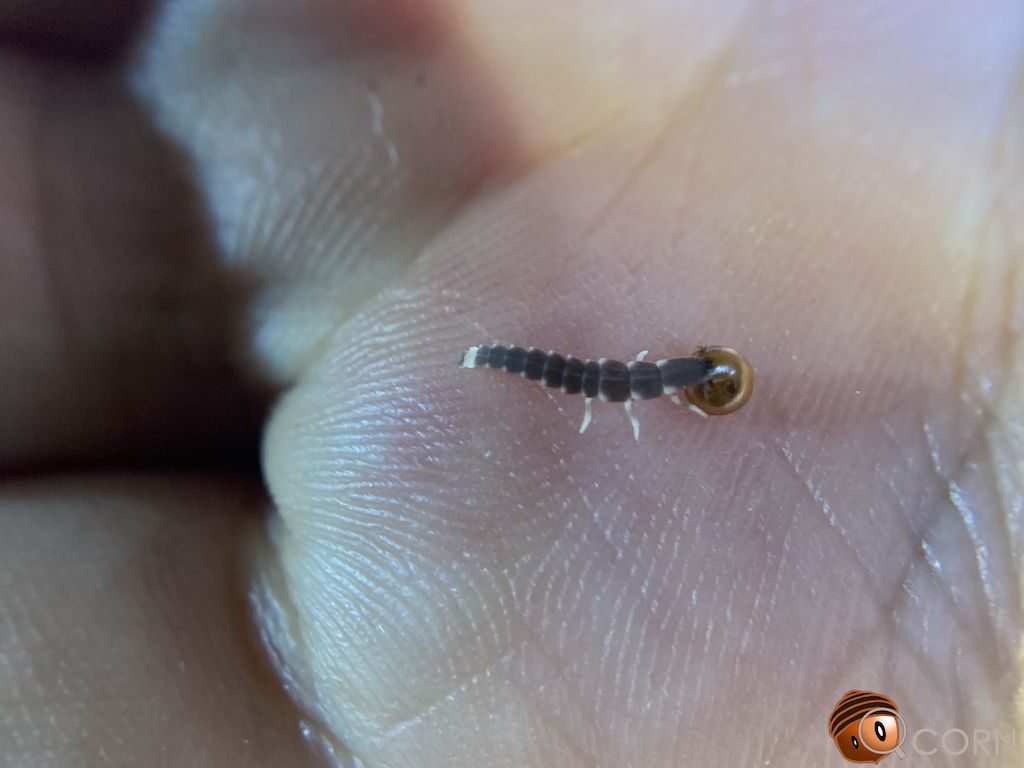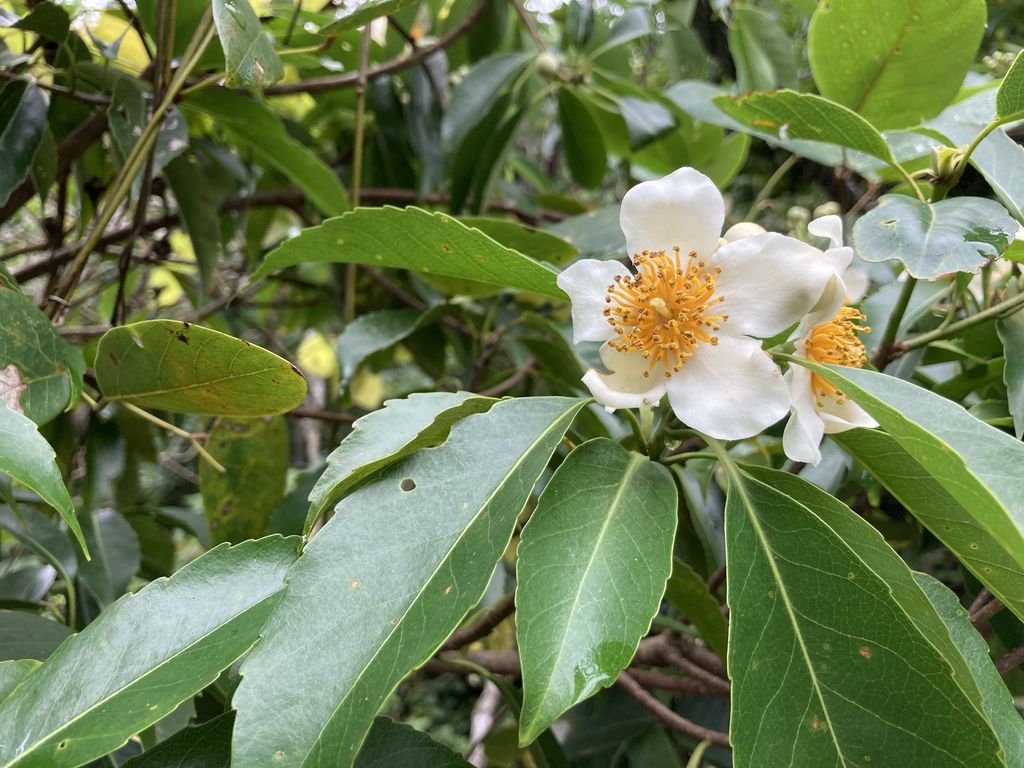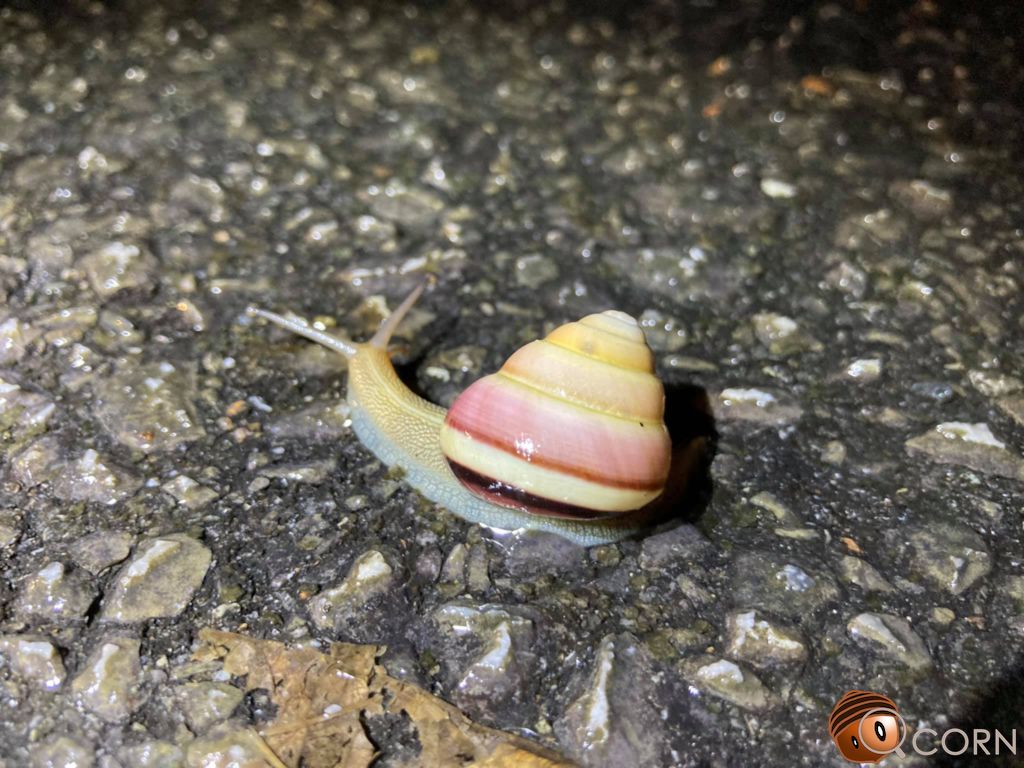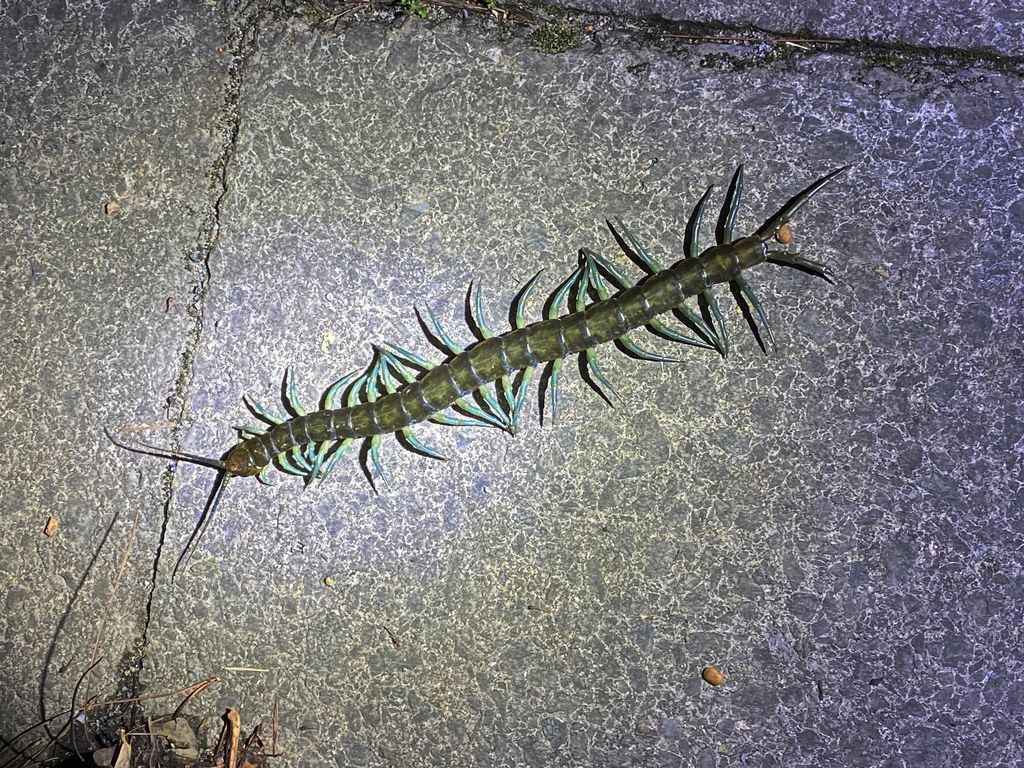Plestiodon marginatus Japanese name: オキナワトカゲChinese name: 沖繩石龍子English name: Okinawa SkinkOrigin: Okinawa Islands, Yoronjima, Okinoerabujima The Okinawa Skink reaches a total length of about 15–19 cm and is distributed in the Okinawa Islands as well as on Yoronjima and Okinoerabujima in the Amami Islands. It mainly inhabits coastal forests and grasslands, in contrast to Barbour’s Skink… Continue reading Okinawa Skink
Tag: Okinawajima
Okinawa Short-Legged Skink
Ateuchosaurus okinavensis Japanese name: オキナワヒメトカゲChinese name: 沖繩光蜥English name: Okinawa Short-Legged SkinkOrigin: Okinawa Islands The genus Ateuchosaurus is characterized by very short limbs and currently includes three species: The Okinawa Short-Legged Skink reaches a total length of about 10–13 cm and is often active under forest leaf litter, making it difficult to observe. On Okinawajima, it… Continue reading Okinawa Short-Legged Skink
Kawamura’s Rice Field Frog
Fejervarya kawamurai Japanese name: ヌマガエルChinese name: 川村氏澤蛙、川村陸蛙English name: Kawamura’s Rice Field FrogOrigin: Western Honshu (central region and westward), Shikoku, Kyushu, and some nearby islands in Japan; several islands of the Amami Islands (except Yoronjima) and Okinawa Islands (some islands); parts of China Kawamura’s Rice Field Frog is a Fejervarya species widely distributed in western Japan,… Continue reading Kawamura’s Rice Field Frog
Barbour’s Skink
Plestiodon barbouri Japanese name: バーバートカゲChinese name: 巴氏石龍子English name: Barbour’s SkinkOrigin: Okinawa Islands, Amami Islands The Barbour’s Skink is a medium-sized lizard found in the Okinawa and Amami Islands. Its specific name honors American herpetologist Thomas Barbour. Juveniles are dark brown with five golden longitudinal stripes along the sides of the body, and their tails are… Continue reading Barbour’s Skink
Okinawa Giant Stag Beetle
Serrognathus titanus okinawanus Japanese name: オキナワヒラタクワガタChinese name: 沖繩扁鍬形蟲English name: Okinawa Giant Stag BeetleOrigin: Okinawajima, Iheyajima, Iejima, Kourijima, Minnajima, Sesokojima, Hamahigajima, Tsukenjima, Tokashikijima, Zamamijima, Akajima, Gerumajima, Kumejima The giant stag beetle Dorcus titanus is widely distributed across Korea, Japan, Taiwan, China, and Southeast Asia, with 12 subspecies recorded in Japan. The Okinawa giant stag beetle is… Continue reading Okinawa Giant Stag Beetle
Okinawa Bredia
Bredia okinawensis Japanese name: コバノミヤマノボタンChinese name: 小葉深山野牡丹English name: Okinawa BrediaOrigin: Endemic to the northern part of Okinawajima This species is endemic to the Yambaru region in northern Okinawajima. It can be distinguished from the commonly seen Melastoma candidum, which has larger flowers with five petals. Okinawa Bredia typically has smaller flowers with four petals and… Continue reading Okinawa Bredia
Okinawa Pyrocoelia Firefly
Pyrocoelia matsumurai Japanese name: オキナワマドボタルChinese name: 沖繩窗螢English name: Okinawa Pyrocoelia FireflyOrigin: Some islands of the Okinawa Islands and the Yaeyama Islands Pyrocoelia matsumurai, a species belonging to the genus Pyrocoelia, is divided into the following three subspecies: In the Yambaru region, if you turn off your flashlight near damp roadside ditches, you may be able… Continue reading Okinawa Pyrocoelia Firefly
Okinawa needlewood tree
Schima wallichii ssp. Japanese name: イジュChinese name: 西南木荷、紅木荷English name: Okinawa needlewood treeOrigin: This species is widely distributed in Southeast Asia. In Japan, it is found in the Ryukyu Islands and the Ogasawara Islands. Schima wallichii is distributed mainly in the Ogasawara and Ryukyu Islands in Japan. The populations in these two regions differ slightly in appearance,… Continue reading Okinawa needlewood tree
Satsuma eucosmia
Satsuma eucosmia eucosmia Japanese name: オキナワヤマタカマイマイ (ヤンバルヤマタカマイマイ)Chinese name: 沖繩高腰蝸牛English name: Satsuma eucosmiaOrigin: Okinawa Islands (Okinawajima, Iejima, Sesokojima, Tsukenjima, etc.). A different subspecies is found on Okinoerabujima in Kagoshima Prefecture. Among the arboreal species of the genus Satsuma distributed in the Okinawa Islands, the following are relatively common on Okinawajima: Satsuma eucosmia shows significant color variation.… Continue reading Satsuma eucosmia
Halcyon Giant Centipede
Scolopendra alcyona Japanese name: リュウジンオオムカデChinese name: 琉神蜈蚣、青龍蜈蚣(TW)English name: Halcyon Giant CentipedeOrigin: Northern Okinawajima, Ishigakijima, Iriomotejima, Kumejima, Tokashikijima, Taiwan This species was described as new in April 2021 ( Reference ), and it is the third known amphibious centipede species in the world. It inhabits stream environments and is known to dive into the water when… Continue reading Halcyon Giant Centipede
